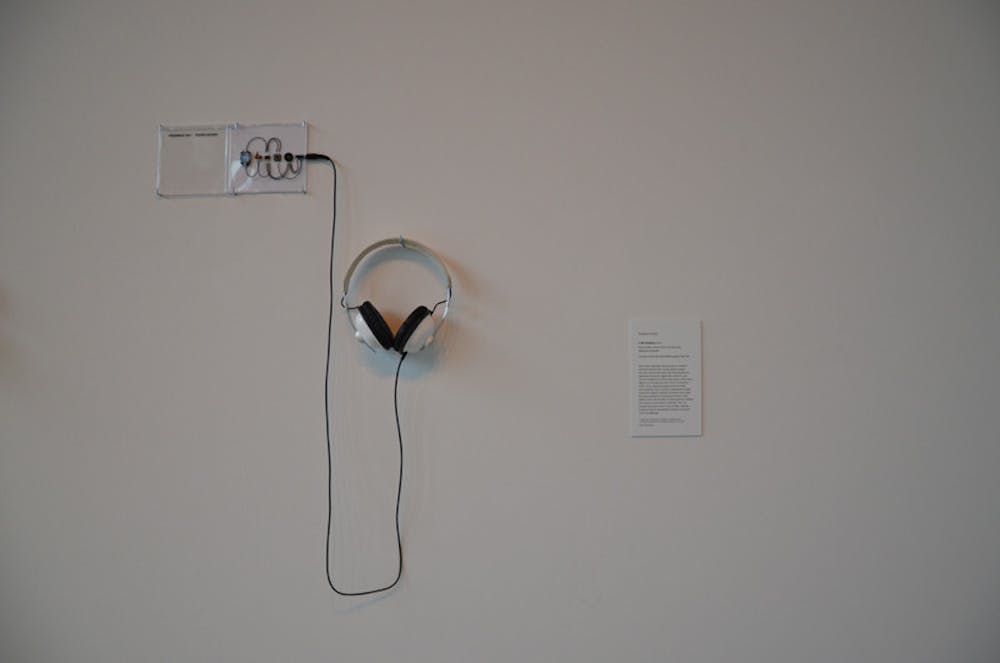Perhaps it is rather cliche to convey imperfection through visual art, but to experience it aurally is an innovative concept. This is indeed at the heart of the “Audible Spaces: Tristan Perich, Zarouhie Abdalian and [The User],” an exhibition that constructs physical space around sound.
Upon entering the David Winton Bell Gallery in List Art Center, visitors first encounter [The User]’s “Coincidence Engine One: Universal People’s Republic Time.” This sculptural work resembles a cross-section of a vase lined with stacks of hundreds of battery-powered ticking clocks. Though the clocks appear to be set to the same time, the ticking sound indicates otherwise. The aggregation of the ticking sound going off not-so-simultaneously forces participants to become sensitive to this discord, even if the clocks only tick milliseconds apart.
In the next room is Zarouhie Abdalian’s “In Unison,” an interior installation composed of loudspeakers and, at the center of the room, ten glass vessels of different shapes — some cylindrical, others more vase-like, all filled with different volumes of water. When walking around the room, visitors can hear multiple tones at once, some more audible than others. But upon approaching any one of the glass vessels, visitors can suddenly only hear a single tone. The pitch, while subtle, varies according to which vessel to which the visitor is closest. As their perception of sound changes at every pace, visitors become attuned to the temporality and delicacy of harmony and its immediate disintegration.
Tristan Perich’s “Microtonal Wall: 1,500 divisions of four octaves from C3 to C7” offers a similar experience. It’s part of the same exhibition but located at the Cohen Gallery in the Perry and Marty Granoff Center for the Creative Arts. The display, which comprises 1,500 black speakers in rows set up in a rectangular grid on the wall, emanates a very low, subtle sound. But when the viewers step closer to each speaker, they can similarly isolate sounds radiating from each speaker.
Despite the separate location of Perich’s work, visitors should not be discouraged from seeing this part of the exhibition. Perich’s work is integral to the exhibition. Ironically, Petrich, Abdalian and [The User], taken as a unit, explore the tension in the attempt for harmony and the resultant discord. That discord, as their works demonstrate, lends form and space to sound. The participant’s hearing alters according to the space that surrounds the works and his or her relation to both the work and that surrounding space.

ADVERTISEMENT




